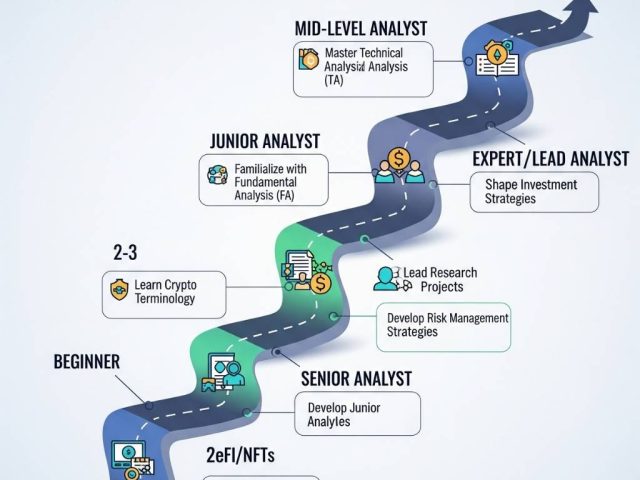Cryptocurrencies have emerged as a disruptive force in the financial world, offering a decentralized and secure alternative to traditional currencies. With thousands of cryptocurrencies in existence, it can be challenging to navigate this complex landscape. This comprehensive report delves deep into the main types of cryptocurrencies, exploring their underlying technology, purpose, benefits, potential risks, and other important information.
How Cryptocurrencies Work
Cryptocurrencies operate on a technology called blockchain, which is a distributed ledger that records all transactions across a network of computers. This decentralized system ensures transparency and security, as each transaction is verified and added to the blockchain in a tamper-proof manner. This means that all transactions are checked and permanently recorded on a secure network, making it very difficult for anyone to change or tamper with the information.
Smart Contracts
Smart contracts are self-executing contracts that automate agreements on a blockchain. They are essentially programs stored on a blockchain that automatically execute when certain conditions are met. This allows for trustless and transparent agreements, as the terms of the contract are enforced by the blockchain itself, without the need for intermediaries.
Consensus Mechanisms
To ensure all network participants follow the rules and that the information added to the blockchain is accurate, cryptocurrencies use consensus mechanisms. These mechanisms are different ways that the network agrees on the validity of transactions and the order in which they are added to the blockchain.
There are many types of consensus mechanisms used by different blockchains. Two of the most common are:
- Proof-of-Work (PoW): In PoW, miners use computer power to solve complex mathematical problems to validate transactions and add blocks to the blockchain. This is the mechanism used by Bitcoin.
- Proof-of-Stake (PoS): In PoS, validators stake their coins to validate transactions and are rewarded for honest participation. The more coins a validator stakes, the higher the chance of being selected to validate a block.
Other consensus mechanisms include:
- Proof-of-Authority (PoA): In PoA, a limited number of trusted nodes are authorized to validate transactions.
- Delegated Proof-of-Stake (DPoS): In DPoS, token holders vote for delegates who validate transactions on their behalf.
Main Types of Cryptocurrencies
While thousands of cryptocurrencies exist, they can be broadly categorized into several main types:
- Bitcoin (and forks): Bitcoin, created in 2009 by Satoshi Nakamoto, was the first cryptocurrency. It operates on a decentralized blockchain and uses a proof-of-work (PoW) consensus mechanism. Bitcoin has a capped supply of 21 million coins, making it a scarce digital asset. Bitcoin forks, such as Bitcoin Cash (BCH) and Bitcoin SV (BSV), are variations of Bitcoin that were created due to disagreements within the Bitcoin community about its future development. These forks resulted in new cryptocurrencies with some differences in their rules or features.
- Altcoins: Any cryptocurrency that is not Bitcoin is generally classified as an altcoin. Examples include Ethereum (ETH), Litecoin (LTC), Ripple (XRP), and Cardano (ADA). Each altcoin has its own unique characteristics, purpose, and underlying technology.
- Stablecoins: Stablecoins are designed to maintain a stable value, usually pegged to a fiat currency like the US dollar. They offer stability in the volatile cryptocurrency market and are commonly used for trading, payments, and storing value. Stablecoins offer price stability and can be used to avoid the volatility of other cryptocurrencies. Popular stablecoins include Tether (USDT), USD Coin (USDC), and DAI.
- Tokens: Tokens are digital assets created on existing blockchains. Unlike coins with their own blockchains, tokens have various uses, such as utility tokens (providing access to services), security tokens (representing ownership), and governance tokens (granting voting rights).
- Memecoins: Memecoins are cryptocurrencies inspired by internet memes or jokes. They often gain popularity through social media hype and community engagement. Dogecoin (DOGE) is a well-known example of a memecoin.
- NFTs: NFTs (non-fungible tokens) represent ownership of unique digital or physical assets. They are used to verify authenticity and ownership of items like digital art, collectibles, in-game items, and other unique assets.
Purpose and Benefits of Cryptocurrencies
Purpose
Cryptocurrencies were initially designed to be a digital form of cash that could be used for everyday transactions. However, their use cases have expanded significantly, and they are now also used for:
- Investment: Many people invest in cryptocurrencies with the hope that their value will increase.
- Decentralized Finance (DeFi): Cryptocurrencies are used to power DeFi applications, which offer financial services like lending, borrowing, and trading on a blockchain without intermediaries.
- Gaming and Metaverse: Cryptocurrencies and NFTs are used in blockchain-based games and virtual worlds to represent in-game items, virtual land, and other digital assets.
Benefits
Cryptocurrencies offer several advantages over traditional financial systems:
- Decentralization: Cryptocurrencies operate independently of central banks and governments, providing users with more control over their funds.
- Security: Blockchain technology ensures secure and transparent transactions, reducing the risk of fraud and manipulation.
- Lower transaction fees: Cryptocurrency transactions often have lower fees compared to traditional bank transfers, especially for international payments.
- Faster transaction speeds: Cryptocurrency transactions are typically processed faster than traditional bank transfers, enabling quicker settlements.
- Accessibility: Cryptocurrencies can be accessed by anyone with an internet connection, promoting financial inclusion for those without access to traditional banking services. This can be particularly beneficial in countries with limited access to financial services.
- Transparency: All transactions are recorded on the public blockchain, providing transparency and accountability.
Potential Risks and Challenges
While cryptocurrencies offer numerous benefits, they also come with potential risks and challenges:
- Volatility: Cryptocurrency prices can be highly volatile, fluctuating significantly in short periods. This volatility poses investment risks and can make cryptocurrencies less suitable for everyday transactions.
- Security risks: While blockchain technology is secure, cryptocurrency exchanges and wallets can be vulnerable to hacking and theft.
- Regulatory uncertainty: The regulatory landscape for cryptocurrencies is still evolving, and changes in regulations could impact the use and value of cryptocurrencies.
- Lack of consumer protection: Cryptocurrency transactions are often irreversible, and there is limited consumer protection in case of fraud or disputes.
- Environmental concerns: Some cryptocurrencies, like Bitcoin, require significant energy consumption for mining, raising environmental concerns.
Mitigating Risks
To mitigate these risks, investors and users can consider the following strategies:
- Diversification: Spreading investments across different cryptocurrencies can help reduce the impact of volatility in any single asset.
- Secure wallet management: Using secure wallets and practicing good security hygiene can help protect against hacking and theft.
- Staying informed: Keeping up-to-date on regulatory developments and industry news can help users make informed decisions and avoid potential risks.
Cryptocurrencies vs. CBDCs
Central Bank Digital Currencies (CBDCs) are digital versions of fiat currencies issued by central banks. Unlike cryptocurrencies, which are typically decentralized, CBDCs are centralized and controlled by a central authority. CBDCs aim to provide the benefits of digital currencies, such as faster transaction speeds and lower costs, while maintaining the stability and control of traditional currencies.
| Characteristic | Cryptocurrencies | CBDCs |
|---|---|---|
| Means of payment | Accepted by a limited number of businesses | Universally accepted, legal tender |
| Store of value | Tend to be volatile, depends on market price | Stable, consistent with central bank price stability mandate |
| Unit of account | Own unit of account | Fiat currency (e.g., US dollar) |
| Governance | Typically decentralized | Centralized |
Export to Sheets
Deep Dive into Specific Cryptocurrencies
This section provides a more detailed analysis of specific cryptocurrencies, including their underlying technology, purpose, and potential risks:
Bitcoin (BTC)
- Underlying technology: Bitcoin operates on its own blockchain and uses a proof-of-work (PoW) consensus mechanism, where miners compete to solve complex mathematical problems to validate transactions and add blocks to the blockchain.
- Purpose: Bitcoin was created as a decentralized digital currency, allowing peer-to-peer transactions without intermediaries.
- Potential risks: Volatility, regulatory uncertainty, security risks, and environmental concerns.
Ethereum (ETH)
- Underlying technology: Ethereum is a blockchain platform that supports smart contracts and decentralized applications (dApps). It uses a proof-of-stake (PoS) consensus mechanism, where validators stake ETH to secure the network and validate transactions.
- Purpose: Ethereum enables the development of decentralized applications and the creation of new cryptocurrencies and tokens. Ethereum is also used to facilitate work done on its blockchain. For example, it can be used as payment for validating transactions.
- Potential risks: Scalability issues, competition from other blockchains, and regulatory uncertainty.
XRP (XRP)
- Underlying technology: XRP operates on the XRP Ledger, a decentralized blockchain that uses a unique consensus mechanism called the XRP Ledger Consensus Protocol (RPCA). This consensus mechanism relies on a network of trusted validators to confirm transactions.
- Purpose: XRP is designed to facilitate fast and cost-effective cross-border payments and currency exchange.
- Potential risks: Legal and regulatory challenges, competition from other cryptocurrencies, and reliance on financial institutions.
Tether (USDT)
- Underlying technology: Tether is a stablecoin pegged to the US dollar. It operates on various blockchains, including Ethereum and Tron, and relies on the underlying blockchain’s consensus mechanism for security.
- Purpose: Tether provides a stable digital representation of the US dollar, reducing volatility in the cryptocurrency market.
- Potential risks: Regulatory concerns, de-pegging risks, and lack of transparency regarding reserves.
BNB (BNB)
- Underlying technology: BNB is the native token of the Binance Smart Chain (BSC), a blockchain platform that supports smart contracts and dApps. BSC uses a Proof-of-Staked-Authority (PoSA) consensus mechanism.
- Purpose: BNB is used for transaction fees on BSC, staking, and participating in token sales on the Binance exchange.
- Potential risks: Regulatory challenges, competition from other exchanges and smart contract platforms, and centralized dependencies on Binance.
Solana (SOL)
- Underlying technology: Solana is a high-performance blockchain platform that uses a unique combination of Proof of History (PoH) and Proof of Stake (PoS) consensus mechanisms.
- Purpose: Solana aims to provide fast and scalable transactions, making it suitable for decentralized applications and DeFi projects.
- Potential risks: Network instability, competition from other blockchains, and reliance on MEV bots.
USD Coin (USDC)
- Underlying technology: USDC is a stablecoin pegged to the US dollar. It operates on various blockchains, including Ethereum and Solana, and relies on the underlying blockchain’s consensus mechanism for security.
- Purpose: USDC offers a stable and transparent digital representation of the US dollar, commonly used for trading, payments, and DeFi applications.
- Potential risks: Regulatory concerns, de-pegging risks, and smart contract vulnerabilities.
Cardano (ADA)
- Underlying technology: Cardano is a blockchain platform that uses a PoS consensus mechanism called Ouroboros. It has a layered architecture that separates the accounting and computational layers for enhanced flexibility and scalability.
- Purpose: Cardano aims to provide a secure and sustainable platform for the development of dApps and smart contracts.
- Potential risks: Competition from other blockchains, slow adoption, and reliance on institutional demand.
Dogecoin (DOGE)
- Underlying technology: Dogecoin is based on Litecoin and uses a PoW consensus mechanism. It has an inflationary supply model with no maximum cap on the number of coins.
- Purpose: Dogecoin was initially created as a lighthearted memecoin but has gained popularity for tipping, donations, and small transactions.
- Potential risks: Price volatility, lack of proper accountability, and technical security risks.
TRON (TRX)
- Underlying technology: TRON is a blockchain platform that uses a Delegated Proof of Stake (DPoS) consensus mechanism. It has a three-layer architecture that includes a core layer, storage layer, and application layer.
- Purpose: TRON aims to decentralize the entertainment and content-sharing industry by providing a platform for developers and creators. TRON can also be used for various purposes, including sending cryptocurrency, DeFi functionality, and swapping different tokens.
- Potential risks: Competition from other blockchains, regulatory uncertainty, and market manipulation.
Chainlink (LINK)
- Underlying technology: Chainlink is a decentralized oracle network that connects smart contracts to off-chain data sources. It operates on the Ethereum blockchain and uses a derivative of the PoS consensus mechanism.
- Purpose: Chainlink provides reliable and tamper-proof data to smart contracts, enabling them to interact with real-world information.
- Potential risks: High operating costs, limited flexibility, and security vulnerabilities.
Market Capitalization and Trading Volume
Market capitalization and trading volume are important metrics for assessing the size and activity of a cryptocurrency:
| Cryptocurrency | Market Cap (USD) | Trading Volume (USD – 24h) | Circulating Supply | Max Supply |
|---|---|---|---|---|
| Bitcoin (BTC) | $1,631,477,721,380.53 | $43,151,167,886.08 | 19,834,853 BTC | 21,000,000 BTC |
| Ethereum (ETH) | $249.97B | $21.23B | 120.60M ETH | — |
| XRP (XRP) | $127,235,116,275 | $4,682,612,406 | ||
| Tether (USDT) | $143,005,207,882 | $67,663,686,003 | 140 Billion USDT | 140 Billion USDT |
| BNB (BNB) | $78,933,830,267.08 | $1.54B | 142,475,421.09 BNB | 200 Million BNB |
| Solana (SOL) | $64.71B | $4.18B | 509.02M SOL | — |
| USDC (USDC) | $58,295,021,047.84 | $11.83B | 58,303,970,068.105 USDC | — |
| Cardano (ADA) | $25,770,912,270.81 | $1,796,371,653.58 | 35,224,212,741.267 ADA | $45,000,000,000.00 |
| Dogecoin (DOGE) | $26,614,511,525.11 | $2.17B | 148,368,186,383.705 DOGE | Not enough data |
| TRON (TRX) | $22,284,255,406.09 | $642.21M | 95,044,274,862.979 TRX | Not enough data |
| Pi (PI) | $10,305,176,730 | $927,831,720 | 7.2 Billion PI | 100 Billion PI |
| Chainlink (LINK) | $8,997,561,626.94 | $630.24M | 638,099,970.453 LINK | 1,000,000,000 LINK |
Export to Sheets
Note: Market capitalization and trading volume data are constantly changing. The figures provided above are approximate and based on the latest available information from various sources.
Conclusion
Cryptocurrencies represent a paradigm shift in the financial landscape, offering a decentralized, secure, and accessible alternative to traditional currencies. They have the potential to disrupt traditional financial systems by providing faster, cheaper, and more transparent transactions. Cryptocurrencies are also being used to power innovation in various industries, such as supply chain management, healthcare, and voting systems.
While cryptocurrencies present numerous benefits, such as lower transaction fees, faster speeds, and increased transparency, potential risks like volatility, security threats, and regulatory uncertainty must be considered. Investors and users can mitigate these risks by diversifying their investments, using secure wallets, and staying informed about regulatory developments.
As the cryptocurrency market continues to evolve, staying informed about the different types of cryptocurrencies, their underlying technology, and potential risks is crucial for making informed investment decisions and navigating this complex and dynamic ecosystem. Sources and related content





